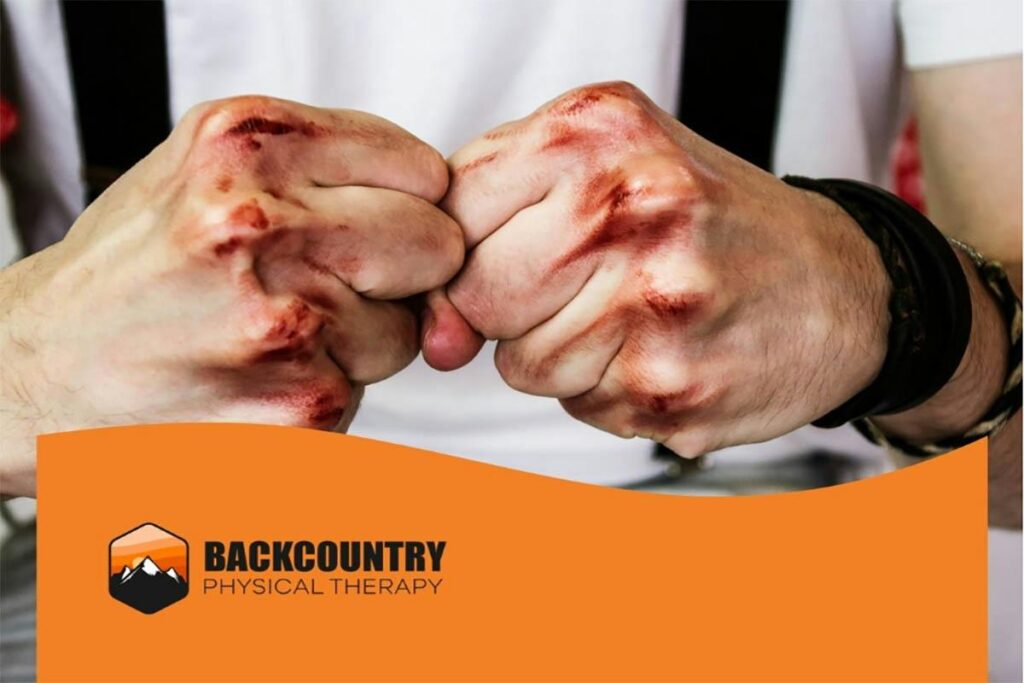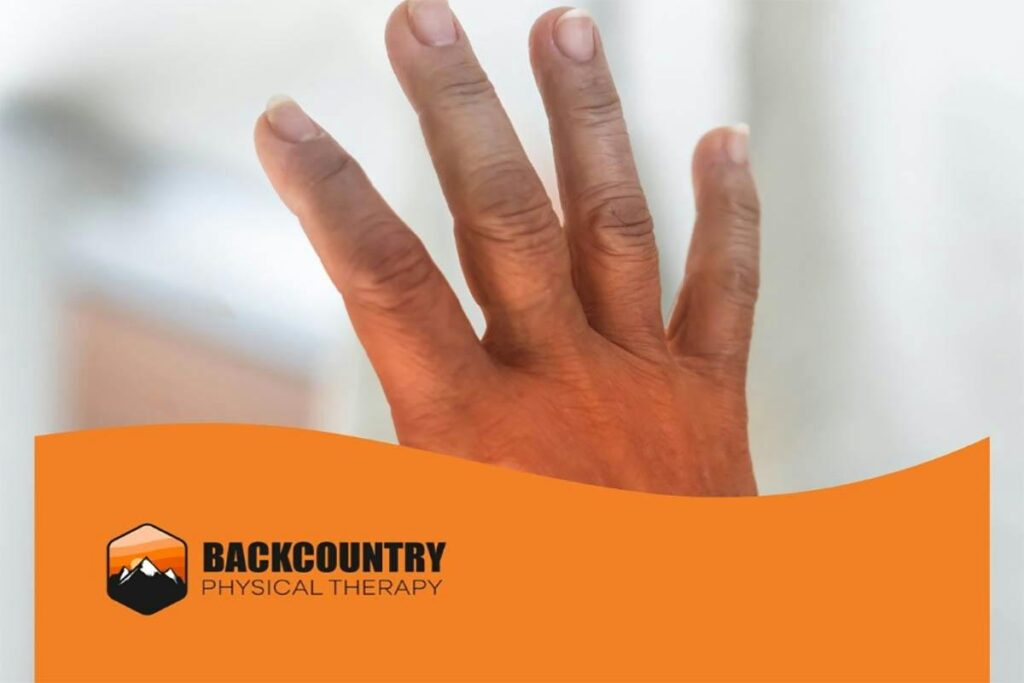Introduction
Climbing is an exhilarating sport that demands strength, technique, and agility. However, with the thrill comes the risk of climbing injuries, and one common ailment that plagues climbers is climbing pulley injuries. These injuries, often related to the fingers, can be debilitating and hinder a climber’s performance.
In this blog, we’ll delve into climbing pulley injuries, exploring what pulleys are, the injuries climbers commonly suffer, risk factors, symptoms, treatments, prevention strategies, and the importance of seeking professional advice, such as Back Country Physical Therapy.
What are pulleys and why are they important for climbers?
A finger injury, specifically pulley injury, is the predominant ailment among rock climbers, constituting over 40% of all climbing injuries. The sensation is unmistakable when it occurs.
Pulleys are crucial anatomical structures in the fingers that play a vital role in climbing. They consist of fibrous bands that stabilize the flexor tendons, providing support during gripping and climbing movements. Without properly functioning pulleys, climbers would struggle to maintain a secure grip, making these structures integral to the sport.
Which pulley injuries do climbers most often suffer?
Understanding these specific types of pulley injuries, including those involving the proximal and middle phalanx and interphalangeal joints, is crucial for climbers. It enables them to tailor their training regimens, adopt proper techniques, and take preventive measures to minimize the risk of these injuries.
Pulley Ruptures
- Flexor tendon pulleys account for 33% of climbing injuries, and among competitive athletes, the estimated incidence of pulley ruptures ranges from 19% to 26%.
- Finger pulley injuries, a common injury, occur when the stress on the finger pulleys exceeds their capacity, leading to tearing or complete rupture.
- Overloading the fingers, especially during dynamic moves or crimping, significantly increases the risk of pulley ruptures.
Strain and Sprains
- Climbers may experience pulley strains or sprains, damaging the fibrous bands of the injured finger without complete rupture.
- These injuries, often related to finger pulley injury, commonly result from repetitive stress, improper techniques, or inadequate rest between climbing sessions. The middle fingers are particularly susceptible to such strains.
Microtears
- Microtears in the pulleys, including partial ruptures, can occur gradually over time due to constant stress on the fingers, particularly during the acute phase.
- Climbers engaging in intense and frequent climbing sessions without sufficient recovery are more susceptible to these microtears, particularly in the A4 pulley.
Partial Tears
- Climbers may suffer from partial tears in the pulleys, specifically, the A2 pulley, where the fibers of the finger flexor tendons are damaged but not completely severed.
- This type of injury, if left untreated, can lead to chronic pain and instability in the fingers, significantly impacting climbing performance. Complete recovery is essential for returning to optimal climbing abilities.
Recognizing Pulley Injury Symptoms
Climbers should be attentive to subtle signs indicating a pulley injury, as early detection is crucial for effective intervention and recovery. Common symptoms of a climber’s pulley injury, prompting clinical diagnosis and the beginning of the rehab process, include. Seeking functional therapy is essential for a comprehensive recovery plan:
Pain and Tenderness: Persistent pain or tenderness in the finger joints, particularly around the pulley areas and the distal phalanx, signals potential injury. The pain can vary in intensity, from mild discomfort to sharp sensations.

Swelling and Bruising: Swelling and bruising around the affected finger joints, particularly on the palmar aspect, suggest pulley damage. These physical changes can impact the finger’s normal range of motion, potentially affecting tendon glides.

Popping Sensation: A noticeable popping or snapping sensation during climbing activities may indicate a pulley rupture or tear, often accompanied by mild pain. Climbers should be attentive to these sensations, especially under external load, seeking professional evaluation if they occur.

Weakness and Instability: Weakness in the affected fingers, coupled with a sense of instability during gripping, is a common symptom of a pulley injury, compromising the mechanical advantage and impacting climbing performance, a critical position in rock climbers.

Limited Range of Motion: Pulley injuries often result in a restricted range of motion in the fingers, affecting the flexor tendon pulley system. Difficulty fully extending or flexing the fingers, especially under load, is a key indicator of pulley damage, impacting the axis of rotation.

Pulley Injury Treatment Approaches for Climber’s
Rest, Ice, Compression, and Elevation (RICE)
Climbers recovering from pulley injuries rely on the RICE protocol: Rest, Ice, Compression, and Elevation. Sufficient rest, ice to reduce swelling, compression for support, and hand elevation collectively foster an ideal healing environment.
Professional Medical Intervention
Professional medical intervention is essential for severe flexor tendon pulley injuries, including partial pulley ruptures and complete A2 pulley ruptures. Consult a sports injury specialist for a comprehensive assessment and personalized treatment plan, which may include anti-inflammatory medications for targeted pain and inflammation management, promoting an effective recovery.
Physical Therapy and Rehabilitation Exercises
Physical therapy is a vital treatment option for pulley injury recovery. Guided by a qualified therapist, climbers perform targeted exercises to strengthen affected fingers, enhance flexibility, and foster overall healing, helping to prevent issues such as flexion contractures. This approach addresses immediate symptoms and promotes long-term resilience and injury prevention.
Ergonomic and Therapeutic Techniques
Integrating ergonomics and therapeutic techniques into the treatment plan enhances overall recovery. Climbers adopt ergonomic strategies for injury prevention, while therapeutic techniques address both symptoms and the degrees of flexion, ensuring a comprehensive and lasting recovery. This approach minimizes the risk of recurrent injuries, allowing climbers to return to their sport with renewed strength and confidence.
What are the risk factors for climbers?
Overtraining
Overtraining heightens the risk of pulley injuries for climbers. Insufficient rest between intense sessions increases susceptibility to strains and tears, particularly in the proximal portion of the pulleys.
Poor Climbing Techniques
Using improper climbing techniques, like excessive reliance on crimping or inefficient hand positions, can strain the pulleys. Insufficient awareness or training in the correct climbing form increases the pulley injury risk.
Inadequate Warm-ups
Skipping warm-ups before climbing can leave finger muscles unprepared for stress, increasing the risk of strains and injuries. Pulley injuries often result from inadequate warm-up before training, insufficient stretching and cool-down after workouts, short intervals between sessions, and repetitive overuse.
Insufficient Rest Between Sessions
After intense climbing sessions, fingers require sufficient time to recover and rebuild. Climbers lacking proper rest days in their training schedules may accumulate stress on the pulleys, elevating the risk of injuries and challenging the biomechanical model of finger health.
Poor Conditioning
Lack of overall finger strength and conditioning increases the vulnerability of pulleys. Climbers should emphasize gradual progression and include targeted exercises to strengthen finger muscles and pulleys, considering the additional support of techniques like supportive taping.
Preventing Climber’s Pulley Injuries
Proper Training Techniques
- Employ correct climbing techniques, avoiding over-reliance on stress-inducing movements like excessive crimping, to safeguard the biomechanical properties of the fingers and reduce the risk of injuries.
- Focus on balanced strength training to enhance overall finger and hand strength, with particular attention to the volar aspect, a crucial consideration during clinical evaluation for optimal climbing performance.
Adequate Warm-ups
- Prioritize thorough warm-up routines before climbing to prepare the fingers and pulleys for the stress of the activity, promoting resilience not only during climbing but also in daily living. Incorporate gentle range-of-motion exercises to enhance flexibility and reduce the risk of injuries.
- During climbing sessions, include dynamic exercises, explicitly targeting the fingers, in warm-up routines to mitigate the risk of severe injuries, such as the rupture of A2.
Recognizing Personal Limitations
- Be aware of individual physical limitations and avoid pushing beyond the body’s current capabilities, reducing the risk of A3 Rupture and fostering a safer climbing experience.
- Listen to the body’s signals, including signs of fatigue or slight pain, and adjust the climbing intensity accordingly, safeguarding against strain on injured tissue and promoting a proactive approach to injury prevention.
Gradual Progression
- Gradually increase difficulty levels in climbing sessions to allow the fingers and pulleys to adapt to higher stress gradually, reducing the risk of a partial pulley tear.
- Avoid sudden and drastic changes in climbing intensity to minimize the risk of overuse injuries, which can strain the fibrous tissue.
Incorporating Rest Days
- Integrate regular rest days into the training schedule, specifically around the 2-4 week mark, to provide adequate time for finger recovery.
- Allow the pulleys and surrounding tissues to heal and strengthen by balancing climbing sessions with sufficient rest, which is crucial for recovering from a complete A2-pulley injury.
Attention to Climbing Form
- Pay close attention to climbing form and technique, ensuring proper hand positions and movements, especially crucial for extreme rock climbers.
- Seek guidance from experienced climbers or instructors to refine and improve climbing techniques, fostering body awareness and reducing the risk of injuries to the adjacent finger.
If You Experience These Symptoms, Consult Back Country Physical Therapy
Back Country Physical Therapy addresses sports-related injuries, including climbing pulley injuries. Seeking professional guidance and medical evaluation can accelerate recovery, relying on clinical findings, and help climbers return to their sport with improved strength and resilience. For effective Climbing Wrist Injury Prevention, consult with Back Country Physical Therapy.
Conclusion
Climbing pulley injuries are a common challenge for climbers, but they can be managed effectively with awareness, proper training, and early intervention. Understanding the importance of pulleys, recognizing risk factors, and adopting preventive measures are key components of a climber’s journey toward maintaining finger health and enjoying the sport for years.



